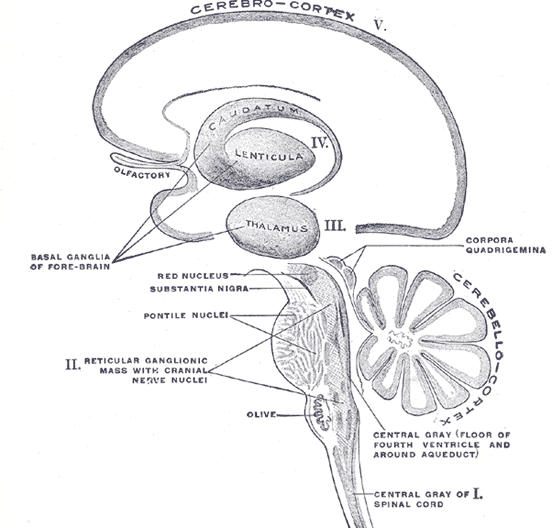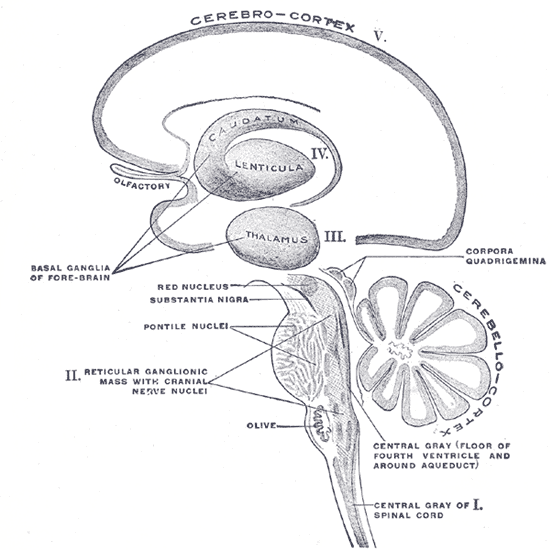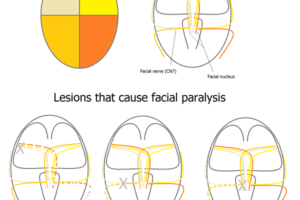
Telencephalic areas, or cerebrum, arise from the developmental structure known as the telencephalon. These areas include the cerebral cortex, the basal ganglia, and the olfactory bulb. Together with the diencephalon, the telencephalon comprises the mammalian forebrain.
C-shape of the Telencephalon
 Unlike the diencephalon below it, the human telencephalon has somewhat of a C-shape. This comes about because the middle part of the telencephalon grows rapidly during development. What starts as a straight line along the rostro-caudal axis progressively bends as the mid-section grows dorsally and caudally.
Unlike the diencephalon below it, the human telencephalon has somewhat of a C-shape. This comes about because the middle part of the telencephalon grows rapidly during development. What starts as a straight line along the rostro-caudal axis progressively bends as the mid-section grows dorsally and caudally.
This explains why the temporal lobe sits below the parietal lobe – the rostral tip of the temporal lobe actually starts out as the caudal tip of the telencephalon, but the parietal and occipital lobes grow up and back, leaving the temporal lobe at one end of the C.
This also means that many cerebral structures are curved, including the lateral ventricles, the corpus callosum, fornix/hippocampus, caudate, and cingulate gyrus. These structures can appear twice in coronal sections (see Nolte, p. 67). For example a coronal section through rostral cerebrum can clip the corpus collosum twice. It’s useful to recognize that the anterior commissure is really just the corpus collosum for the temporal lobes. Coronal sections through the caudal cerebrum can clip the caudate nucleus twice (see figure for example).
Structures To Identify on Sections
For a basic understanding of the anatomy of the telencephalon, you should know the structures shown on pp. 68-71 of Human Brain: An introduction to its functional anatomy. By J. Nolte. Mosby, Inc. 2002.

